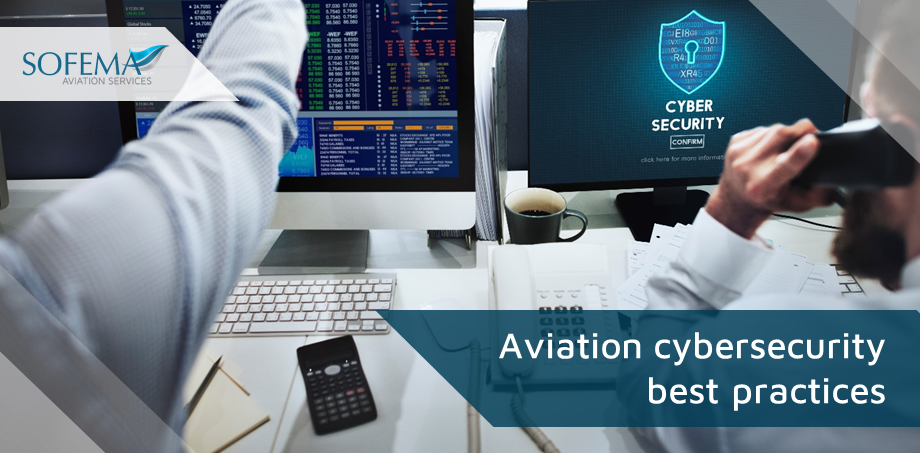Sofema Aviation Services (www.sassofia.com) considers the challenges as well as understanding best practices related to cybersecurity across multiple EASA Domains including Operations, Maintenance, Airports and Air Traffic Control.
Introduction
Aviation, like other sectors that heavily rely on digital technology, is prone to cyber threats. The complexity of aviation systems makes them attractive to potential cyber-attackers, thus requiring robust cybersecurity measures. Aviation Cybersecurity Assessment Tools are designed to identify, mitigate, and prevent security risks. These tools are designed to assess system vulnerabilities and provide recommendations for strengthening cybersecurity.
European Centre for Cybersecurity in Aviation (ECCSA) – See here
- ECCSA is an initiative supported by EASA aimed at increasing collaboration and information sharing amongst aviation stakeholders, a key enabler for implementing a resilient aviation cyberspace.
- ECCSA provides to its members secure means to exchange domain-relevant cybersecurity information, such as vulnerabilities as well as cybersecurity events and incidents that might be worth sharing with the aviation community.
- ECCSA’s operational team of analysts provides additional inputs to the information shared by the participants, with the aim to facilitate the creation and the management of an aviation cybersecurity threats knowledge and risk picture.
Identifying Related Risk Challenges
Aviation Cybersecurity Assessment Tools can identify numerous risk challenges, including:
- Unsecured Communication Channels: Tools can help identify weak points in communication channels. Aviation heavily depends on communication between aircraft, air traffic control, maintenance crews, and other stakeholders.
- Software Vulnerabilities: Cybersecurity tools can assess the resilience of avionics software to cyber-attacks. They do this by scanning for known vulnerabilities and testing the robustness of the software against potential attacks.
- Data Integrity Threats: These tools can evaluate whether there are sufficient protections in place to maintain the integrity of flight data, passenger information, and other crucial data sets.
- Access Control: They can assess whether there are robust measures in place to control access to crucial systems and data. This includes physical access (like access to the cockpit) and digital access (like access to avionics systems).
- Supply Chain Risks: Tools can also evaluate whether suppliers and partners adhere to robust cybersecurity practices, as these entities could inadvertently introduce vulnerabilities into aviation systems.
Cybersecurity Best Practices
When using these tools, there are a few best practices to consider:
- Regular Assessments: Regularly using these tools can help identify new vulnerabilities that could be exploited. Cyber threats are constantly evolving, so regular assessments are essential.
- Holistic Approach: Cybersecurity tools should be used as part of a holistic approach to security that includes physical security, personnel training, and organizational policies.
- Multi-layered Security: Implement a layered security model, where multiple security measures are in place to protect against a variety of threats. If one layer is compromised, others still offer protection.
- Incident Response Planning: Ensure there is a robust plan in place to respond to cyber incidents. This plan should be regularly tested and updated as necessary.
- Education and Training: Ongoing education and training about cyber threats can help staff identify potential risks and respond appropriately. This includes training on social engineering tactics, phishing, and other common threats.
- Collaboration and Information Sharing: Collaboration with other stakeholders in the aviation industry can lead to better threat intelligence and more robust security measures.
- Secure Software Development Lifecycle: Follow secure software development practices, including secure coding standards, code reviews, and regular software updates and patches. This ensures that aviation systems are developed and maintained with cybersecurity in mind.
Next Steps
Follow this link to our Library to find & Download related documents for Free.
Do you want to learn more about this topic? Sofema is pleased to provide the following course: EASA Compliant Organizational Cybersecurity Responsibilities – 1 Day
Please visit Sofema Aviation Services (www.sassofia.com) & Sofema Online (www.sofemaonline.com) or email us at team@sassofia.com if you want to learn more about our services.
Tags:
Aircraft Maintenance, aviation, EASA, Airports, Supply Chain, Aviation Risk, SAS blogs, Aircraft Operations, Air Traffic Controllers, Cybersecurity, European Centre for Cybersecurity in Aviation (ECCSA), Software Vulnerabilities, Unsecured Communication Channels, Data Integrity Threats




